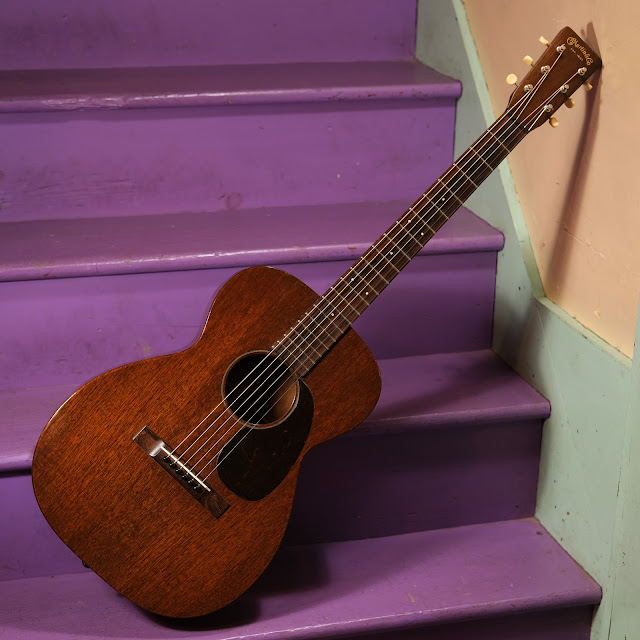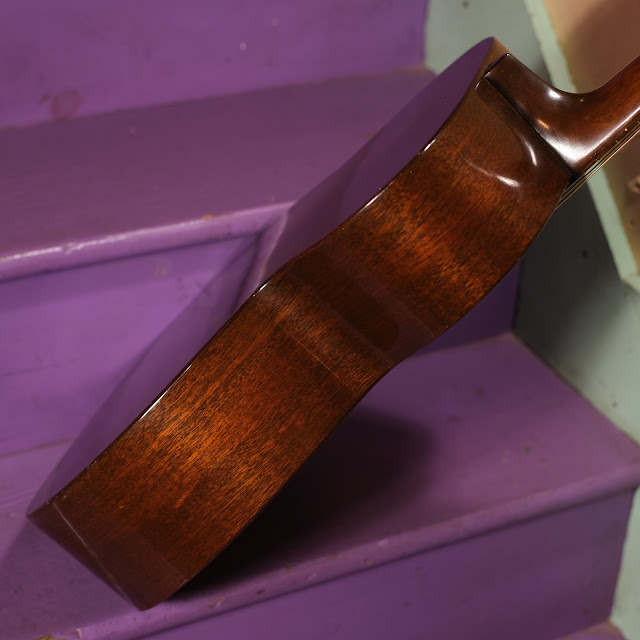1946 Martin 0-17 Flattop Guitar
A customer of mine was doing some horse-trading and this one came to him during that transaction. He's looking for more of a 00-size instrument, so it's here for consignment.
That said, this guitar is shockingly clean. I (and a number of my customers) had to double-take it to make sure that the finish is original. It certainly looks all-original to me -- with the usual weather-checking seen mostly on the upper-bout top and around the curvier parts of the guitar.
It's also seen work in the recent past -- someone has reset the neck (a good job) and while I'm not entirely sure, it may have been refretted in recent memory, too, as the fretboard looks virtually unplayed and I expect it had a plane/level job done to it.
These '40s 0-17s can be hit or miss, but this one's definitely a hit. It's not as wide-sounding as some of them, but it has the clean, woody, midsy, creamy bliss that you expect from good examples of this model. They're great for singing with as the more-compressed range of the voice doesn't overpower or cover-up the average singer the same way an 0-18 might. It also sounds better for folksier country-blues playing and is a winner for metal-pick-fingerpickers as it'll sweeten the attack.
Repairs included: a fret level/dress, compensation of the saddle, cleaning, and restring.
Setup notes: action is spot-on at 3/32" EA and 1/16" DGBE at the 12th fret. The neck is straight and it's strung with 54w-12 gauges in phosphor bronze.
Scale length: 24 7/8"
Nut width: 1 11/16"
String spacing at nut: 1 1/2"
String spacing at bridge: 2 3/16"
Body length: 18 1/8"
Lower bout width: 13 1/2"
Waist width: 8 1/8"
Upper bout width: 10 1/8"
Side depth at endpin: 4 1/4"
Top wood: solid spruce
Back/sides wood: solid mahogany
Neck wood: mahogany
Bracing type: x
Fretboard: rosewood
Bridge: rosewood, bone saddle comp'd
Neck feel: medium C shape, ~14" board radius
Condition notes: the action is spot-on but the neck was reset to suit the original saddle's original height -- a little over 1/16" above the bridge's "deck" -- so there's not a lot of adjustment room to play with. This is typical of any "as normal" period Martin because the original saddles really weren't very tall to begin-with. Note also: the intonation is a hair flat on the high E string at the 12th fret. If you press harder when fretting, it's a non-issue as that bends it to pitch, but if you play with a light touch, it may be. I can replace the original saddle and install a wider one on the house, but I leave that up to the next buyer as the visual will be different.
Also: the finish is quite clean throughout but there's some weather-check on the upper-bout-top and shoulders and in small spots here and there. There are a few small scratches and nicks here and there but the overall look is of a 15-year-old instrument, not one from '46! It has replacement (stylistically-correct repro units) tuners and bridge pins + endpin on it, but the original tuners are stowed in the case.
Also: the finish is quite clean throughout but there's some weather-check on the upper-bout-top and shoulders and in small spots here and there. There are a few small scratches and nicks here and there but the overall look is of a 15-year-old instrument, not one from '46! It has replacement (stylistically-correct repro units) tuners and bridge pins + endpin on it, but the original tuners are stowed in the case.
It comes with: a newer, quality hard case.



















Comments